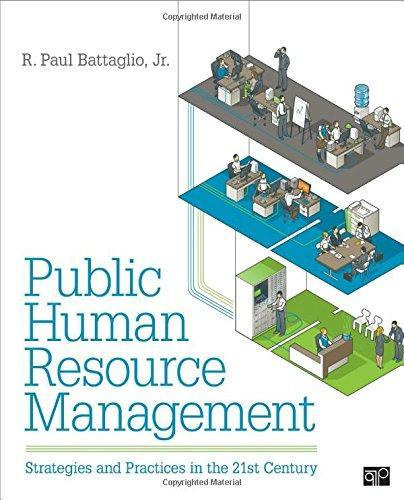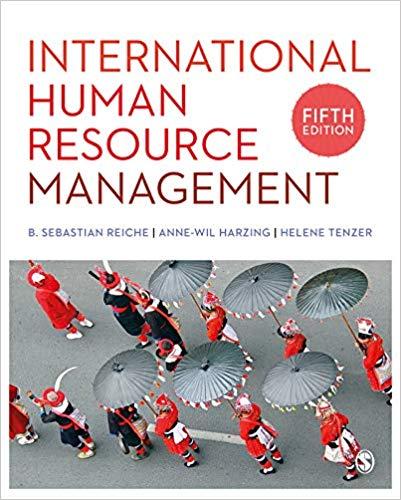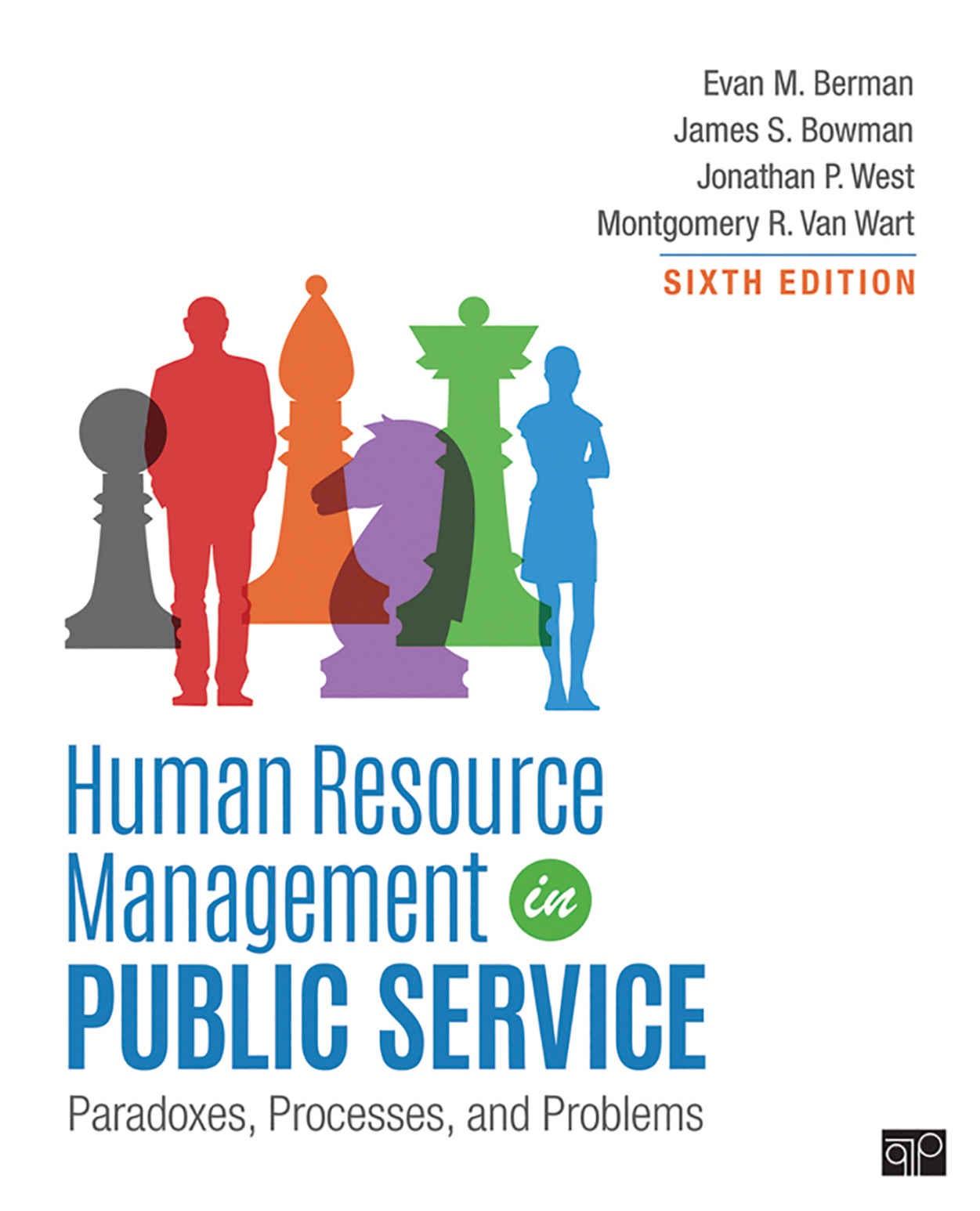https://ebookmass.com/product/human-resource-
More products digital (pdf, epub, mobi) instant download maybe you interests ...
Public Human Resource Management: Strategies and Practices in the 21st
https://ebookmass.com/product/public-human-resource-managementstrategies-and-practices-in-the-21st/
Handbook of Human Resource Management in Government (Essential Texts for Nonprofit and Public Leadership and Management 41) – Ebook PDF Version
https://ebookmass.com/product/handbook-of-human-resourcemanagement-in-government-essential-texts-for-nonprofit-andpublic-leadership-and-management-41-ebook-pdf-version/
Human Resource Management 10th Edition, (Ebook PDF)
https://ebookmass.com/product/human-resource-management-10thedition-ebook-pdf/
Human Resource Management: Strategy and Practice 10th Edition Nankervis
https://ebookmass.com/product/human-resource-management-strategyand-practice-10th-edition-nankervis/
eTextbook 978-0078112799 Human Resource Management 11th Edition
https://ebookmass.com/product/etextbook-978-0078112799-humanresource-management-11th-edition/
(eTextbook PDF) for International Human Resource Management 7th
https://ebookmass.com/product/etextbook-pdf-for-internationalhuman-resource-management-7th/
(eBook PDF) International Human Resource Management 5th Edition
https://ebookmass.com/product/ebook-pdf-international-humanresource-management-5th-edition/
Healthcare Human Resource Management 3rd Edition, (Ebook PDF)
https://ebookmass.com/product/healthcare-human-resourcemanagement-3rd-edition-ebook-pdf/
International Human Resource Management, 8th Edition Peter Dowling
https://ebookmass.com/product/international-human-resourcemanagement-8th-edition-peter-dowling/
B 1/I 1 Mohan Cooperative Industrial Area
Mathura Road, New Delhi 110 044
India
SAGE Publications Asia-Pacific Pte. Ltd.
18 Cross Street #10-10/11/12
China Square Central
Singapore 048423
Library of Congress Cataloging-in-Publication Data
Names: Berman, Evan M., author.
Title: Human resource management in public service: paradoxes, processes, and problems / Evan M. Berman, Victoria University of Wellington, James S. Bowman, Florida State University, Jonathan P. West, University of Miami, Montgomery R Van Wart, California State University at San Bernardino
Description: Sixth Edition | Los Angeles: CQ Press, an imprint of SAGE Publications, Inc , [2019] | Revised edition of: Human resource management in public service / Evan M Berman [et al ] 2013 | Includes bibliographical references and index.
Identifiers: LCCN 2018049485 | ISBN 978-1-5063-8233-3 (Hardcover: acid-free paper)
Subjects: LCSH: Civil service Personnel management.
Classification: LCC JF1601 B47 2019 | DDC 352 6 dc23 LC record available at https://lccn loc gov/2018049485
Printed in the United States of America
This book is printed on acid-free paper.
Acquisitions Editor: Scott Greenan
Editorial Assistant: Lauren Younker
Production Editor: Rebecca Lee
Copy Editor: Laurie Pitman
Typesetter: Hurix Digital
Proofreader: Alison Syring
Indexer: Molly Hall
Cover Designer: Candice
Harman
Marketing Manager: Jennifer Jones
Brief Contents
1. Preface
2. Acknowledgments
3. Introduction
4. Part I • Context and Challenges
5. Chapter 1 • The Public Service Heritage: People, Process, and Purpose
6. Chapter 2 • Legal Rights and Responsibilities: Laws Governing the Workplace
7. Part II • Processes and Skills: From Start to Finish
8. Chapter 3 • Recruitment: From Passive Posting to Social Media Networking
9. Chapter 4 • Selection: From Civil Service Commissions to Decentralized Decision Making
10. Chapter 5 • Position Management: Judicious Plan or Jigsaw Puzzle?
11. Chapter 6 • Employee Motivation: Possible, Probable, or Impossible?
12. Chapter 7 • Compensation: Vital, Visible, and Vicious
13. Chapter 8 • Employee-Friendly Policies: Fashionable, Flexible, and Fickle
14. Chapter 9 • Training and Development: Exploring New Frontiers
15. Chapter 10 • Appraisal: A Process in Search of a Technique
16. Chapter 11 • Unions and the Government: Protectors, Partners, and Punishers
17. Chapter 12 • Collective Bargaining: Structures, Strategies, and Skills
18. Conclusion • The Future as Opportunity, Not Destiny
19. Glossary
20. Index
21. About the Authors
Detailed Contents
Preface
Acknowledgments
Introduction
Managing People
The Paradox Puzzle
Signature Paradoxes
The Paradox Dynamic
Pathways Through Paradoxes: Carpe Diem
Key Terms
References
Part I • Context and Challenges
Chapter 1 • The Public Service Heritage: People, Process, and Purpose
A Day in the Life of Maria Hernandez
Some Challenges in Getting and Managing the Right People
Some Basic Definitions
The Structure and Role of Human Resource Departments
Historical and Institutional Context
Tides of Reform
Scientific Management
War on Waste
Watchful Eye
Liberation Management
Tide Philosophies in Legislation
Institutional Context
Reforming Government in the Clinton, Bush, Obama, and Trump Years
Federal Level
State and Local Levels
Human Resource Management Principles
Ethics and Moral Management
Summary and Conclusion
Key Terms
Exercises
Notes
References
Chapter 2 • Legal Rights and Responsibilities: Laws Governing the Workplace
The Foundations of Employment Law
The Employment Relationship
Balancing Employer, Employee, and Societal Interests
Procedural Due Process and the Taking of Property and
Liberty
Adverse Action
Freedom of Speech
Political Activity and Affiliation
Compensation and Scheduling
Health and Safety
Individual and Vicarious Liability
Privacy Issues
Searches
Testing for Alcohol or Drug Use
Grooming and Dress Codes
Pre-employment Investigations: Truth, Personality, Health, Credit, and Criminal Records
Post-employment References
Discrimination
Antidiscrimination Laws
Intentional Discrimination
Retaliation
Harassment
Affirmative Action
Unintentional Discrimination
Age
Disability
Religion
Preventing and Responding to Discrimination Claims
Summary and Conclusion
Key Terms
Exercises
Notes
References
Part II • Processes and Skills: From Start to Finish
Chapter 3 • Recruitment: From Passive Posting to Social Media
Networking
Factors in Recruitment: Employer and Applicant Perspectives
High-Quality Recruitment: An Employer’s Perspective
High-Quality Recruitment: An Applicant’s Perspective
Recruitment Steps
Planning and Approval
Strategic Planning and Management of Vacancies
Preliminary Decisions About a Specific Position
Position Announcements
Recruitment Strategies
Promoting Diversity in Recruitment
Dividing Responsibilities
Enhancing Recruitment Prospects: The Seeker’s Perspective
Advancing From Job Seeking to Career Development
Summary and Conclusion
Key Terms
Exercises
Notes
References
Chapter 4 • Selection: From Civil Service Commissions to Decentralized Decision Making
The Bases and Origin of Selection
Principles Underlying Selection
The History of Selection: Six Eras
Criteria in Selecting Selection Tests
Selection: Four Screening Phases
Initial Reviewing and Testing
Education and Experience Evaluations
Letters of Recommendation
Biodata Matching Past Experiences With Current Job Requirements
General Aptitude and Trait Tests
Performance Tests for Specific Jobs
Other Considerations Regarding Reviewing and Testing
Interviewing and Reference Checks: Narrowing the Pool
General Considerations for Those Conducting Interviews
Unstructured Interview After or in Addition to Structured Interviews
Reference Checks
Choosing and Negotiation
Post-offer and Hiring Issues
Summary and Conclusion
Key Terms
Exercises
Appendix: The Professional Commitment Statement for Job Seekers
Notes References
Chapter 5 • Position Management: Judicious Plan or Jigsaw Puzzle?
Three Types of Personnel Strategies
The Origins of Position Classification and Management
Job Design and Job Analysis
Creating or Re-creating Jobs
Analyzing and Describing Current Jobs
Job and Position Descriptions
Writing Job Descriptions
From Jobs to Job Systems
The Two Primary Uses of Classification Systems
Grouping Positions
Analyzing Jobs to Set Pay: Job Evaluation
Using Factors and Points for Job Evaluation
Substituting a Whole Job Methodology for Job Analysis or Job Evaluation
Curbing, Cutting, and Eliminating Workforce
Summary and Conclusion
Key Terms
Exercises
Notes References
Chapter 6 • Employee Motivation: Possible, Probable, or
Impossible?
Pull, Push, or Drive?
About Rewards and Money
Human Resource Management and the Climate for Motivation
Tools of Motivation
Psychological Contracts
Giving Feedback
Summary and Conclusion
Key Terms
Exercises
Notes
References
Chapter 7 • Compensation: Vital, Visible, and Vicious
Equity and Expectancy Theory
Pay Determination
Philosophy
Lead, Match, or Lag
The Perennial Pay Debate
Labor Market Forces: External Competition
Job Content: Internal Consistency
Individual Considerations: Fairness and Individual
Contributions
Cost-of-Living Pay Adjustments
Longevity Pay
Merit Pay
Skill-Based Pay
Bonus Programs
Differential Pay
Implications
Summary and Conclusion
Key Terms
Exercises
Appendix: Compensation for Graduate Degrees in Public Affairs and Administration
Notes
References
Chapter 8 • Employee-Friendly Policies: Fashionable, Flexible, and
Fickle
Workforce and Workplace Trends
Family/Work Programs
Child Care
Health, Safety, and Wellness Programs
Flexible Work Arrangements
Flex Options
Telecommuting
Part-Time Work
Voluntary Reduced Work Time
Temporary Work
Leave Sharing and Pooling
Job Sharing
Traditional Benefits: Not-So-Employee-Friendly Trends
Retirement Security
Health Care
Implementation, Assessment, and Evaluation
Avoiding and Coping With Hostility at Work
Best Places to Work
Summary and Conclusion
Key Terms
Exercises
Appendix A: Questions for Employees and Employers
Regarding Telecommuting Arrangements
Appendix B: Some Questions to Answer When Considering Implementation of Employee-Friendly Policies
Appendix C: Family-Friendly Policies
Notes
References
Chapter 9 • Training and Development: Exploring New Frontiers
General Principles of Learning
Motivation
Relevance and Transference
Repetition and Active Participation
Feedback, Reflection, and Positive Reinforcement
Training Strategies
On-the-Job Training
Mentoring
In-House Seminars
Web-Based Learning
Professional Conference Attendance
Simulation and Role-Playing
Formal Education
Organizational Training and Development
Group Development
Leadership Development
Using T&D for Change and Innovation
Strategic T&D Integration
Application: Ethics Training
Summary and Conclusion
Key Terms
Exercises
Appendix: Needs Assessment and Evaluation for Training
References
Chapter 10 • Appraisal: A Process in Search of a Technique
Evolution
Appraisal Systems
The Appraisal Process
Trait-Based Appraisals
Behavior-Based Systems
Results-Based Systems
Commentary
Raters
Rating Errors: The Underbelly of Appraisals
Cognitive Limitations
Intentional Manipulation
Organizational Influences
Human Nature
Improving the Process
Disciplinary Systems
Summary and Conclusion
Key Terms
Exercises
Appendix: Corrective Actions
Notes
References
Chapter 11 • Unions and the Government: Protectors, Partners, and Punishers
Background: Context and Evolution of Employee Relations
Differing Views of Unions
Paradoxes and Contradictions
Trends and Variations
Summary and Conclusion
Key Terms
Exercises
Appendix A: Tips For Managers When Dealing With Unions
Appendix B: Tips For Unions When Dealing With Managers
Notes
References
Chapter 12 • Collective Bargaining: Structures,Strategies, and Skills
Structure, Representation, and Collective Bargaining
Organizing to Bargain
Strategies and Skills
Bargaining
Administering the Contract
Bargaining-Related Reforms
Hostility Versus Harmony
Summary and Conclusion
Key Terms
Exercises
Appendix A: Bargaining Checklist And Observation Sheet
Appendix B: Mock Disciplinary Appeal Board Hearing
References
Conclusion • The Future as Opportunity, Not Destiny
New Technologies, Human Competencies, Failures, and Reforms
Taking Responsibility for Paradoxes
Public Service as a Calling
The Years Ahead
Envoi: Dream While Awake
Glossary Index
Exercises
Notes
References
About the Authors
Preface
Human Resource Management in Public Service: Paradoxes, Processes, and Problems introduces managers and aspiring managers to this personally relevant and professionally exciting field. Not only do all people encounter human capital concerns, but also these issues frequently are found in headline news reports. Execrable or exemplary, such cases make this an unusually interesting area to study. Whether the topic is genetic testing in the recruitment and selection function, partisan patronage in position management, pay reform initiatives in compensation, personnel competencies in training and development, novel approaches to the appraisal process, or strikes in labor–management relations, there is no shortage of controversy. Added to this are the difficulties of managing under tight budgets, which brings attention to hiring freezes, contracting out, layoffs, frustrations of too few to do too much, and politicization of the civil service. Many of these problem areas weaken the capacity of government of serve the common good.
This sixth edition retains the essential qualities and purposes of earlier editions while incorporating numerous revisions, updates, and refinements. Specifically, because employees and managers alike regularly confront human resource puzzles, the book probes these questions from both employee and managerial viewpoints. It discusses these problems, explains how they arise, and suggests what can be done about them. It continues to offer paradoxical perspectives about the inherent challenges, as well as the unique political and legal context, of the public sector management within which they take place.
Furthermore, this edition offers:
The introduction of ethics cases on key human resource management functions
New cases throughout the book that can be used in the classroom or as exercises
New or enhanced sections on dialectical reasoning, the honorable public
service, current personnel reforms, recent Hatch Act and whistleblowing statutes, human resource analytics, performance-based job descriptions, talent management, employee engagement and motivation, “pay is more than about pay,” tactics to reduce gender-based inequities, components of a 21st century compensation, evolution of work-life relations, satisfaction data on benefits, behavioral biases in appraisal, understanding termination rates, no-fault discharge, recent strikes, as well as executive orders and Supreme Court decisions affecting unions, governmental failures, reform initiatives, institutional norms under stress, America’s ultimate paradox, and the constitutional role of civil servants, plus additional skill-building exercises
In short, our team combining nearly 150 years of professional and academic experience (we are much too young to be that old!) has crafted a volume that:
Assumes that readers are or will be generalist line managers; Presents a comprehensive range of topics and issues; Illustrates these discussions with a blend of examples from local, state, federal, and international jurisdictions; and Encourages students not merely to peruse the material but also to apply it.
As longtime members of the American Society for Public Administration who have published widely in the field (see “About the Authors”), we believe that an agency, commission, department, or government enterprise is shaped by its people and how they are managed. That belief motivated us to write the type of text described below.
The Introduction, after articulating the importance of human resource management, sets out the book’s provocative theme that baffling paradoxes pervade the field; it then shows how those paradoxes can be explored and addressed. The chapters that follow feature Learning Objectives, coverage of essential knowledge and skills, pertinent editorial exhibits, lists of Key Terms, telling Endnotes, and Management Exercises. Our intent is to make the material user-friendly and accessible by highlighting dilemmas, challenging readers to resolve them, and enticing them to go beyond the text to discover and confront other conundrums. The idea is not to stuff but rather
Another random document with no related content on Scribd:
Project Gutenberg™ eBooks are often created from several printed editions, all of which are confirmed as not protected by copyright in the U.S. unless a copyright notice is included. Thus, we do not necessarily keep eBooks in compliance with any particular paper edition.
Most people start at our website which has the main PG search facility: www.gutenberg.org.
This website includes information about Project Gutenberg™, including how to make donations to the Project Gutenberg Literary Archive Foundation, how to help produce our new eBooks, and how to subscribe to our email newsletter to hear about new eBooks.











